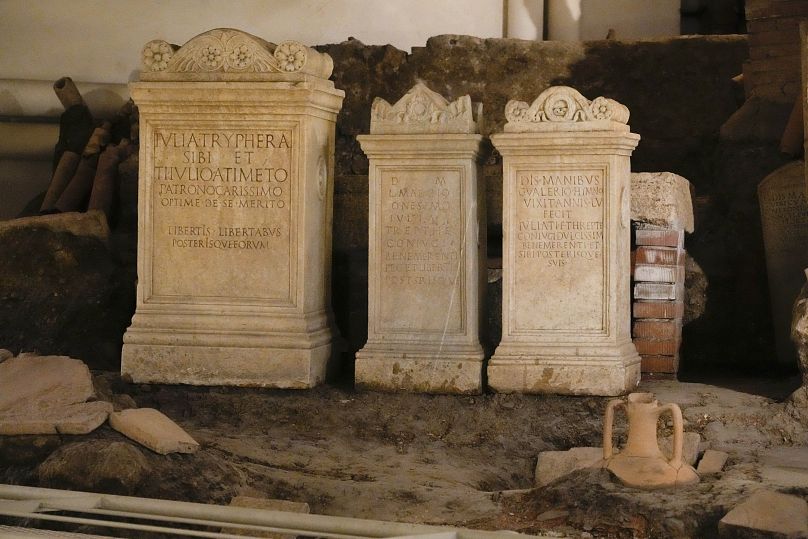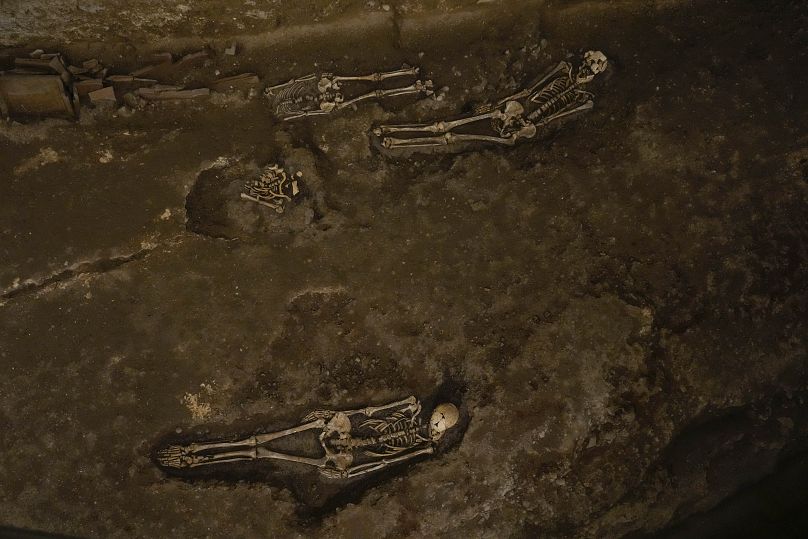A gate along the Vatican's walls has been opened, providing a new entrance to the Via Triumphalis Necropolis, an ancient Roman “city for the dead”.
Hidden in the depths of Vatican City lies an ancient Roman burial ground, the Via Triumphalis Necropolis, often referred to as a "city for the dead."
Within its confines, marble sarcophagi stand beside open burial graves, surrounded by stunning Roman mosaics and frescoes.
Since Roman law forbade the cremation and burial of the dead within the city for safety and hygiene reasons, cemeteries were located along the roads outside the urban area.
While previously the necropolis was only accessible to select groups of scholars and specialists, from 17 November onward, it will be open to the public, via the new Saint Rose Gate entrance, for an exhibition titled "Life and Death in the Rome of the Caesars."
"City of the dead"
Spanning approximately 1,000 square meters, the archaeological area is situated along a segment of the ancient Via Triumphalis, originally located beyond the city walls.
The necropolis was initially unearthed in 1956 during the construction of the Vatican Autoparco. Subsequent discoveries in 2003, made during parking lot construction, revealed the Santa Rosa section, which has only recently been connected to the earlier find.
The tombs, dating from the first to the fourth century AD, predominantly house the remains of "slaves, freedmen, artisans of the city of Rome," according to Leonardo Di Blasi, an expert from Vatican Museums' Ancient Greek and Roman section.
Some were identified as imperial property, with their master often being Emperor Nero.
The necropolis has provided a wealth of information, offering clarity on the identities and life stories of the deceased.
"We begin to learn about people we did not know, particularly about rituals that seem more related to family, neighbourhood, town, or personal traditions than to official religion," explains Di Blasi.
Di Blasi says there's a certain "Alcimo", whose epigraph reads: ‘custos de scena teatro pompeiano’, meaning he was the custodian of the scene of Pompeii's great theatre and had to take care of the set design.
Around his figure are depicted carpenter’s tools that he presumably used for maintenance of theatre scenes.
On another gravestone is a portrait of a certain "Nunnius", who had the duties of a "saltuarius", the one who was in charge of the maintenance of the woods.
Check out the video for a look inside the "City of the dead".













